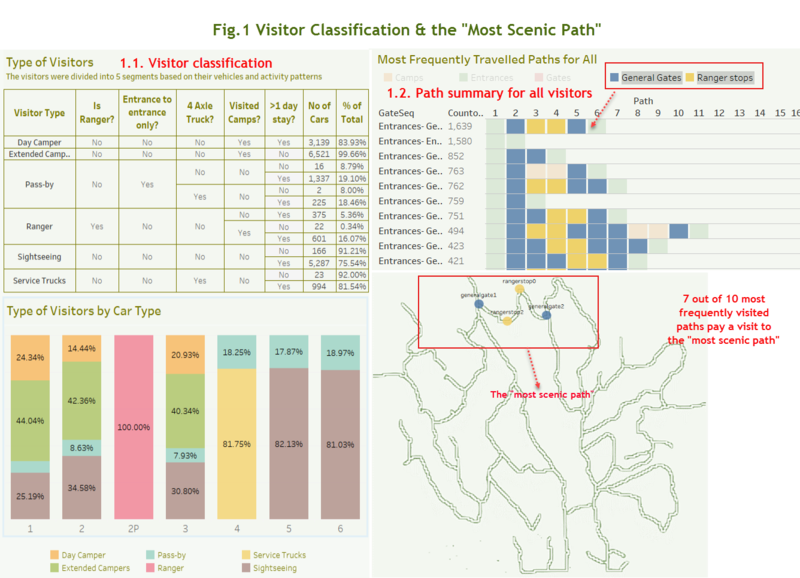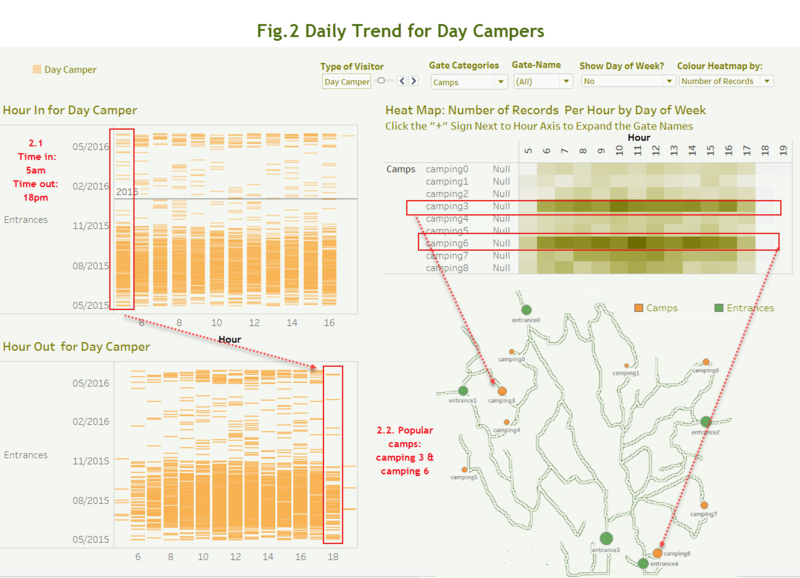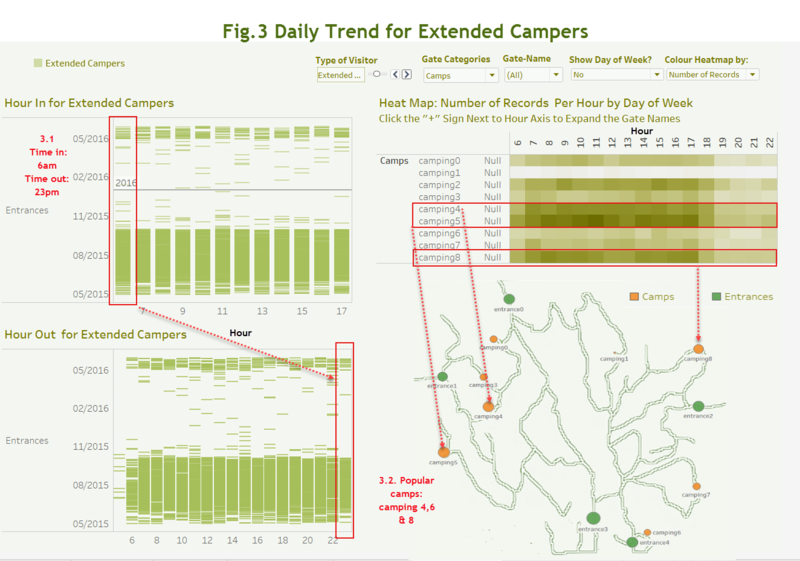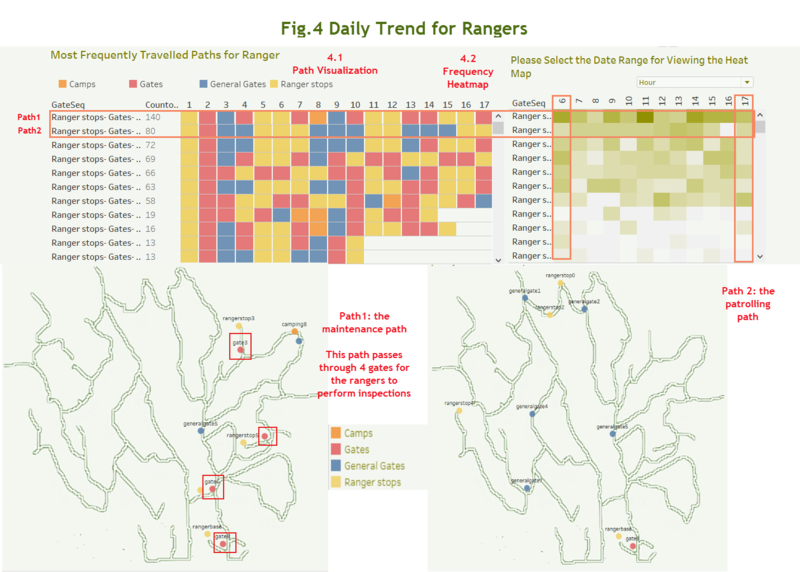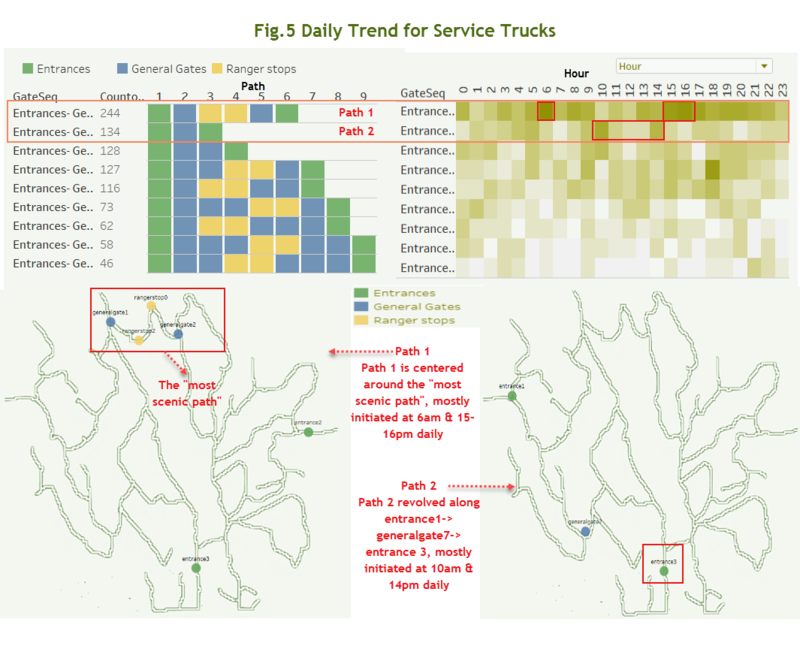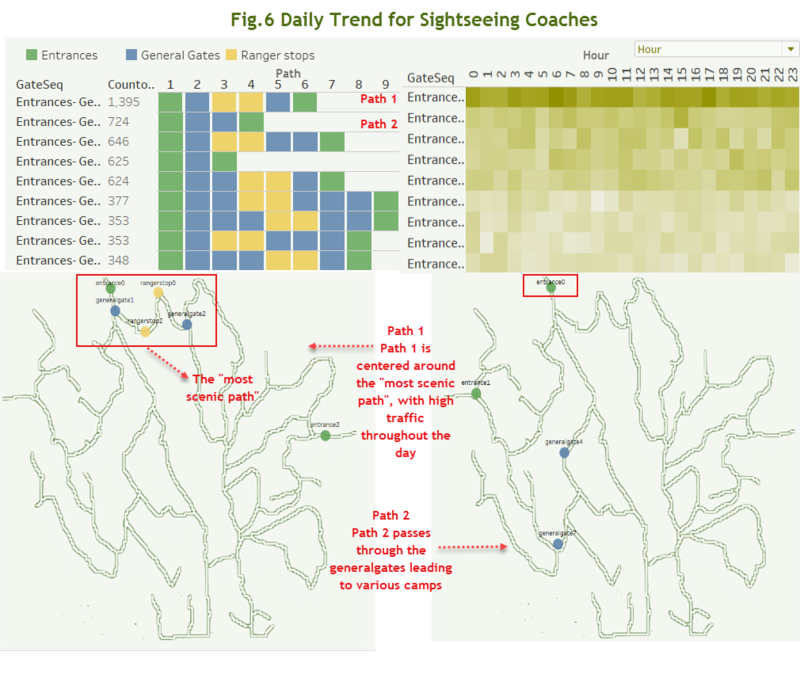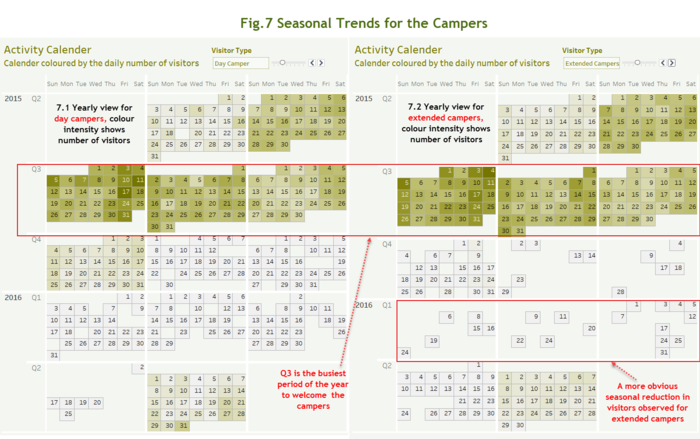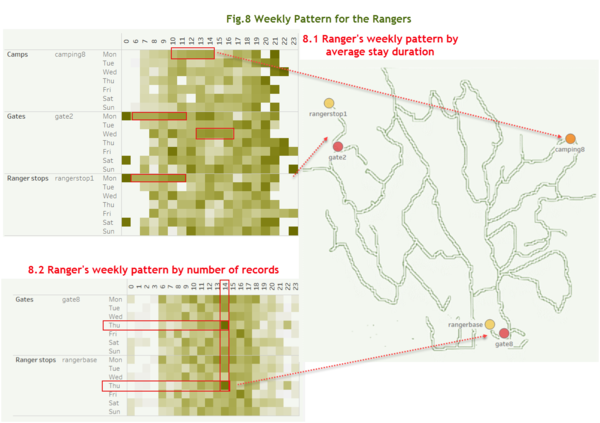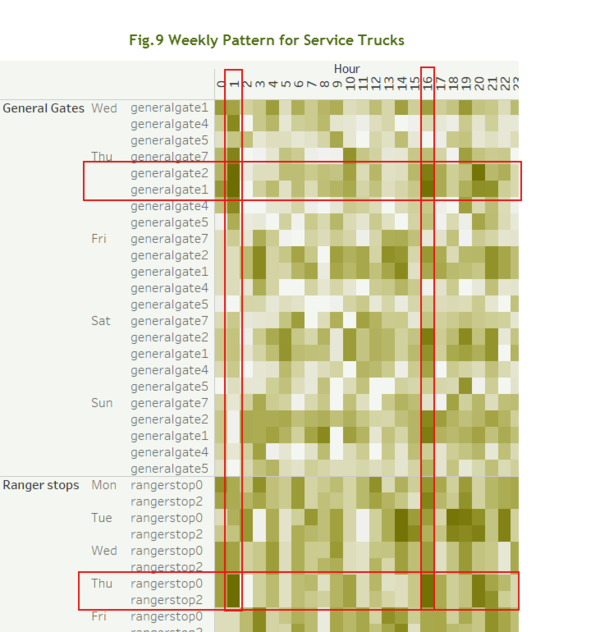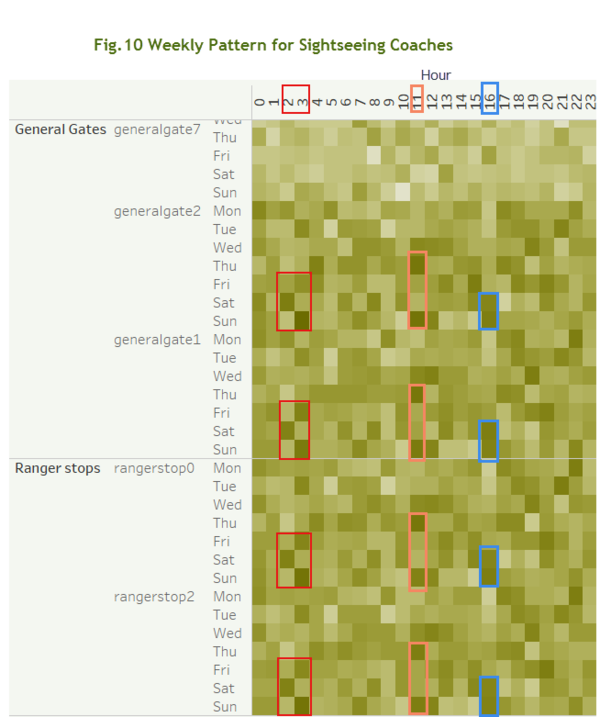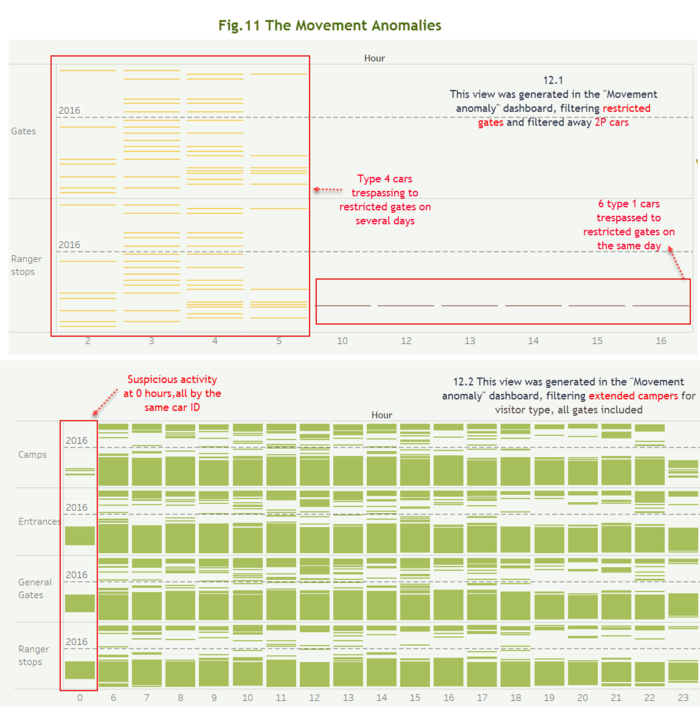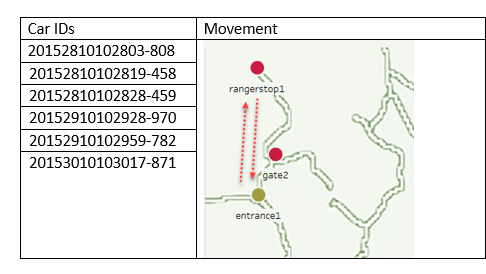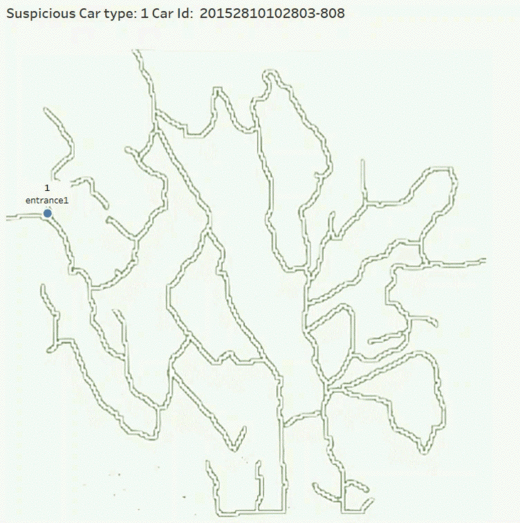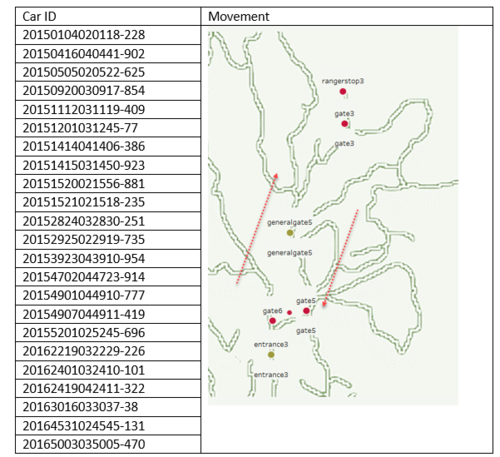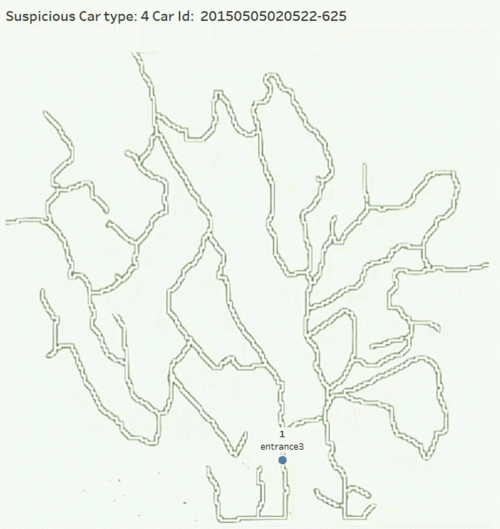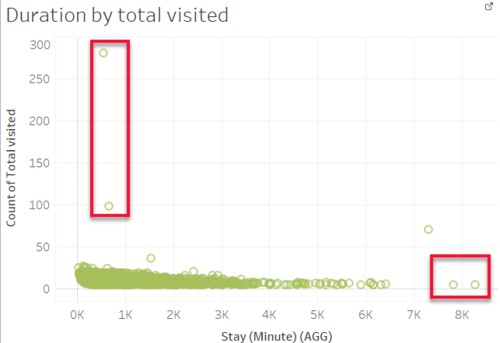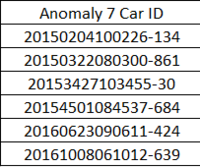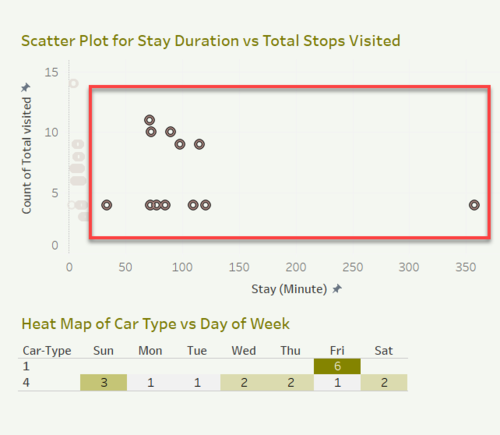ISSS608 2016-17 T3 Assign GUAN YIFEI Visualization
|
|
|
|
|
Viz & Insights
The Daily Trends
Note: The outliers observed in part 3 were removed for the analysis of long period patterns to avoid misunderstandings.
| Patterns | Visualization |
|---|---|
| 1. Setting the scene – classification of visitors & the “most scenic path”
|
|
| 2.Day Campers Refer to Fig 2.1, day campers started to enter the reserve at 5am and left the park by 18:00. In terms of camp selection, Fig 2.2 reveals that camp3 and 6 are their most popular choices, possibly because they are located nearer to the entrances. Accessibility could be one of the considerations for the day campers in choosing their campaign locations due to the limited time they have in the park. |
|
| 3.Extended campers
The day for extended campers started a bit later than day campers, from 6am onwards. The time of exit for them also spread over a longer time range (Fig 3.1). Unlike the day campers, they tend to settle down at the more secluded camp sites like camp 5 and camp 8, to enjoy a quiet night of sleep (Fig 3.2). |
|
| 4.Rangers
The day of rangers started from the ranger base and ends there with their first shift started at 6am and the last shift started at 17pm (Fig 4.2). They travelled by long but fixed paths, the reason could be that they are working on routine shifts (Fig 4.1). There are two typical paths adopted by the rangers, the maintenance path and the patrolling path. The maintenance path passed through various restricted gates, which was normally started at 6am,11am and 14pm. The patrolling path covered the entire reserve, started at regular hour intervals. |
|
| 5.Service Trucks
The service trucks are axle-4 and above heavy vehicles which moved around the reserve throughout the day. They seemed to be visiting the reserve at fixed hours daily – majority of them reported to the “most scenic path” at 6am and 15-16pm daily (path 1 in Fig 5) while the others revolved along entrance 1->generalgate7->entrance 3 at 10am & 14pm daily. These are probably service or supplies trucks transporting goods in and out of the reserve. |
|
| 6.Sightseeing coaches
The sightseeing coaches brought guests to the reserves throughout the day, without entering into the camp sites. Majority of the visitors were brought to the “most scenic path” from different entrances (path 1 in Fig 6) while the rest were dropped along the camping path (path 2 in Fig 6) which connected camps 3,4,5. Unlike the truck drivers, the sightseeing coaches used entrance 3 instead. |
The Longer Period Trends
Note: The outliers observed in part 3 were removed for the analysis of long period patterns to avoid misunderstandings.
| Patterns | Visualization |
|---|---|
| 1.Campers
Fig 7 provides the yearly visitor traffic calendar for the campers. The campers visited the reserve more often from May to Aug, possibly because this is the warm period of the year. The highest traffic of campers was observed in July 2015. There is a drastic drop in the campers, especially extended campers, from Q4 2015 onwards, which could be attributed to the colder weather. |
|
| 2. Rangers Trend
In Fig 8.2 we could see the rangers gathered at the rangerbase and gate 8 (which is in close proximity to the ranger base) on Thursdays 14pm. It could be an indication that the weekly ranger meetings were held on Thursdays 14pm at the rangerbase. |
|
| 3.Service Trucks
Fig 9 below shows the weekly movement pattern for service trucks at various gates. We noticed that there were a higher number of service trucks moved pass the “connecting path” on Thursdays, at two prominent timings: 1am and 16pm. This might be the scheduled delivery/pick up hours for the service trucks. |
|
| 4. Sightseeing coaches
-Fridays & Sundays 3am -Thursdays & Sundays 11am -Sundays 16pm -Mondays 22 pm |
The Anomalies
The Movement Anomaly
We first used the “Movement Anomaly” dashboard to discover the anomalies in the visitors’ movements. Each individual movement was represented by a Gantt bar. The Y axis contains all the days in the observation period and X axis shows the hours of the day. Filters allows the users to filter to see the activities at restricted gates, or only the activities by certain type of cars or visitors. Three movement anomalies were observed.
| Anomalies & Car ID | Visualization |
|---|---|
| In 12.1, we filtered away the 2P cars and filtered in only the restricted gates and noticed two types of trespassing behaviours:
|
The gif below shows the paths adopted by the suspicious vehicles,the restricted gates are colored in red. |
| 2.b.4 vehicle entered from entrance 3 trespassing restricted areas (gate5,gate6,rangerstop6,gate3 & ranger stop 3) 23 times from 2am to 5 am, only observed on Tuesdays and Thursdays. The trespassing cars followed almost exactly the same paths. This looks like some planned acts which were only performed under the masks of the dark night. Type 4 vehicles are the heavy trucks; they could be transporting some illegal materials in or out of the preserve repeatedly. | The gif below shows the paths adopted by the suspicious vehicles,the restricted gates are colored in red. |
| In 12.2, we kept only the “extended campers” and included all the gates in the analysis. We noticed some suspicious movements of the extended campers at 0 hours which the rest of the extended campers would not be active at this hour. Interestingly, we noticed all the activity records belong to the car ID 20154519024544-322, which stayed in the preserve for 5 months. |
Stay Duration Anomaly
In the “Stay Duration Anomaly” dashboard we introduced two scatter plots for anomaly discovery.
| Anomalies & Car ID | Visualization |
|---|---|
| 4.Abnormally high number of stops visited with low average duration
• 20150105060134-242, 20150420100416-232 visited 4 checkpoints but stayed for over one month in the reserve (Extended camper) |
|
| 6.Hiking or sightseeing visitors with abnormally long stay in the park (they are the same group of visitors observed in 1)
|

